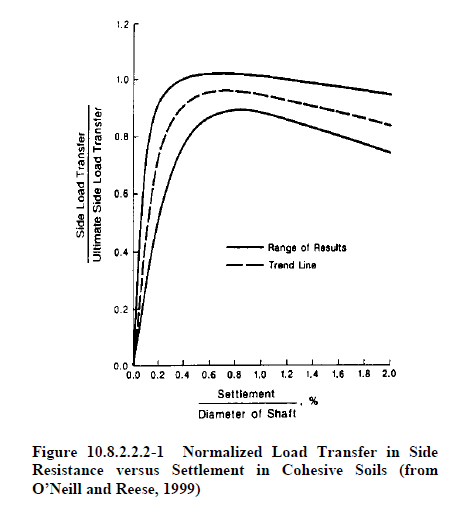Many drilled shafts in soil have been designed for side resistance only. Drilled shafts generally are larger diameter than driven piles and therefore conducive to side resistance. However, I believe the reaction is the same when loaded. Side side resistance is mobilized first, then the base as needed.
Several studies have found side resistance to be mobilized at very small movement compared to pile base resistance. The most notable was work by O’Neil and Reese, with result presented in AASHTO, Figures 10.8.2.2.2-1 thru 4. Figures 1 and 3 show side resistance is fully mobilized at movements of 1% or less of the shaft diameter. End bearing resistance is not fully mobilized until at least 2% and more like 5% of shaft diameter in cohesive soil. After movement of 2% to 5% in clay failure will be a plunge (movement without additional resistance). In granular soil (cohesionless), 100 % of resistance occurs at about 5% of the shaft diameter. Cohesionless soils do not plunge in failure, but continue to increase in resistance with additional movement.
Granted the study pertains to drilled shafts, but I believe the phenomenon is similar for all deep foundations. The pile is supported in side resistance first, and then the end is engaged. Work by Tomlinson and Woodward presented in the 8th edition of Pile Design and Construction Practice (2008) is in support of this phenomenon in Section 4.1.2 The Behavior of Pile Under Load. A single pile monitored with strain gages spaced down the pile length show load is accumulated down the pile. The majority of the side resistance is in support and then the end resistance is engaged. I believe there are many piles that have been installed supported primarily in side resistance, especially longer piles.
The phenomenon of side resistance before end resistance is an important behavior in pile settlement and load transfer, which we will address in future posts. Stay tuned.
